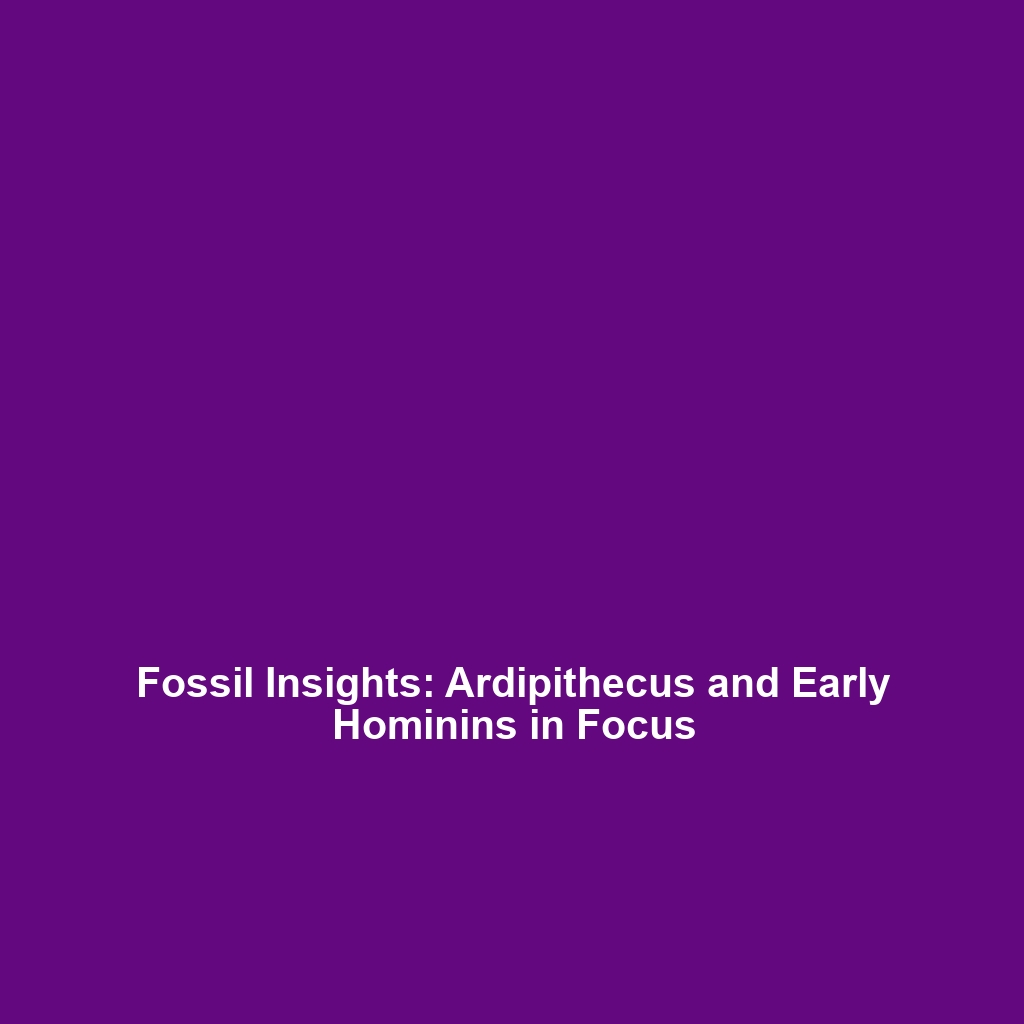Fossil Evidence: Lack of Direct Fossils and Comparisons with Ardipithecus and Early Hominins
Understanding the fossil evidence of human evolution, especially the lack of direct fossils from some of the earliest hominins, is crucial in piecing together our ancestry. The study of fossils such as Ardipithecus provides vital insights into the characteristics and behaviors of our early ancestors. By examining skeletal remains and drawing comparisons, researchers aim to fill the gaps in our evolutionary history and contextualize the evolutionary journey of hominins.
Key Concepts
The study of fossil evidence in human evolution encompasses several key concepts that highlight our biological and cultural development:
1. The Significance of Ardipithecus
Ardipithecus ramidus, a pivotal find, lived approximately 4.4 million years ago and provides critical evidence of early bipedalism. Fossils suggest adaptations conducive to both tree climbing and terrestrial walking, shaping our understanding of the locomotive adaptations in early hominins.
2. The Evolution of Early Hominins
Early hominins, such as Australopithecus and Paranthropus, illustrate a clear evolutionary progression toward modern humans. By studying these hominins’ morphological traits, scientists can draw parallels and identify the diverging paths of genetic and phenotypic changes that mark human evolution.
Applications and Real-World Uses
Fossil evidence, particularly that of Ardipithecus and early hominins, has significant applications in various fields:
- Paleoanthropology: Enhances our understanding of human ancestry and the evolutionary process.
- Education: Provides teaching material for understanding human evolution in academic settings.
- Public Awareness: Informs the public about the complexities of our origins, promoting greater interest in anthropology and archaeology.
Current Challenges
Despite the advancements in fossil studies, several challenges remain in the investigation and implications of fossil evidence:
- Scarcity of Direct Fossils: The absence of more extensive fossil remains restricts comprehensive analysis.
- Preservation Issues: Fossils may have poor preservation, impacting the quality of the evidence available for study.
- Interpretation Differences: Various interpretations of fossil morphology can lead to conflicting theories and debates within the scientific community.
Future Research and Innovations
Ongoing research continues to explore innovative methodologies for studying fossil evidence.
- Advanced Imaging Technologies: Techniques like 3D scanning and CT imaging offer new ways to analyze fossil structures without damaging them.
- Genomic Studies: The extraction of ancient DNA is providing insights into genetic relationships and the evolutionary history of early hominins.
- Interdisciplinary Approaches: Combining anthropology with fields like geology and climate science enhances our understanding of environmental influences on human evolution.
Conclusion
In summary, the fossil evidence pertaining to Ardipithecus and early hominins illustrates both the complexities and the critical nature of our understanding of human evolution. The challenges we face in this field underscore the importance of ongoing research and interdisciplinary collaboration. For further reading on human evolution, consider exploring our articles on Primate Evolution and Paleoanthropological Discoveries.

Leave a Reply